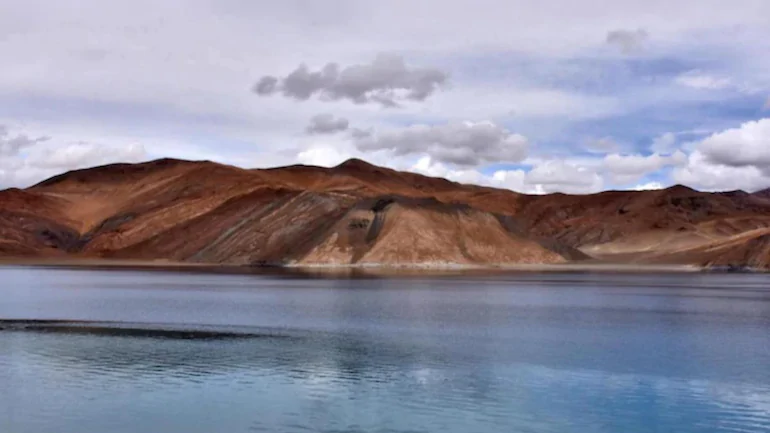
SOURCE: INDIA TODAY
China is practically refusing to discuss the standoff in Pangong Tso, with the deadlock in this friction point now deteriorating because of China simply dismissing it as a talking point. India Today TV has learned that the Chinese reluctance that emerged in the fourth round of talks on June 14-15 has escalated now into an all-out refusal to even acknowledge the Pangong Tso situation as a friction point.
China’s new stance on the Pangong Tso Finger complex stand-off assumes significance considering the Chinese Army has implemented discussed disengagement protocols in full at the Galwan Valley’s Patrol Point 14 and Patrol Point 15 in the Hot Springs sector just south. Disengagement at Patrol Point 17A at the restive Gogra Post has slowed but it is China’s Pangong deployment that has been of chief concern to India so far.
China’s stubbornness at the talks table in even acknowledging Pangong as a friction point between the two countries is the most explicit affirmation of China’s clear intent to change the lines of the pre-May status quo. The new intransigence ties in with two developments the past week.
One, the Chinese Ambassador’s claim that disengagement was complete and that China was at its line in the Pangong Finger complex — a provocative signal that there would be no further pullback. As India Today TV has reported, China’s huge deployment in the disputed stretch between Finger 4-8 had been overrun by Chinese positions starting early May, with very nominal changes now visible.
Two, India Today TV has reported that China has spent the last three weeks building up in-depth areas of Pangong and activating several supply bases in Aksai Chin, capable of rushing in troops for hostile action at short notice.
The Indian Army isn’t taking China’s reluctance to talk on Pangong lightly and has conveyed that there can be no forward movement without a comprehensive and detailed exchange on the current situation in the Finger complex.
Today’s round of the talks, the fifth so far, between the Indian Army Leh Corps Commander, Lt Gen Harinder Singh, and his Chinese counterpart, Maj Gen Lin Liu, was confirmed late last evening by the Chinese side.
Yesterday, August 1, was the People’s Liberation Army (PLA) Day. In a clear sign of a chill in relations since the standoff began in early May, the traditional ceremonial India-China border personnel meeting (BPM), which takes place on PLA Day at Chushul, did not happen yesterday.
Formal greetings were extended under the Eastern Command, but there was no traditional exchange of gifts — both because of the novel coronavirus protocols as well as the steady downward slide in military relations in the past 90 days.
Army sources have told India Today TV that the reports of Chinese troops mobilising around Lipulekh and the central sector across the border from Uttarakhand are “false and untrue”, though deployments are catering for any eventuality there as well.
Apart from the Pangong deadlock, the other major topic of discussion at Sunday’s disengagement talks is the Depsang issue.
In late June, India Today TV had reported on how China was looking to open a fresh front in the Depsang-DBO sectors of northern Ladakh. While Depsang frictions have festered for years, and are not directly linked to the 2020 hostile actions by China in eastern Ladakh, the fact that things have escalated there have compelled India to add Depsang to the agenda.
In Depsang, China has mobilised in larger numbers than before and is continuing to mount temporary transgressions into the Indian territory with vehicles. This has happened for years, with Indian troops usually fending them off, but the transgressions have not only increased in number this year but also strength and duration.
In the past month, the Chinese Army, enjoying far better surveillance in the area than the Indian side, has kept pinpoint tabs on the Indian troop patrols.
When Indian troop teams move out on foot, the Chinese side immediately deploys vehicular convoys to intercept the patrols and block their paths. These collisions have acquired a rhythm of their own for nearly a decade, but there is marked aggression to how the Chinese are asserting the patrol blocks in the last month.
In the last round of talks, when India had raised the Depsang issue, the Chinese had pointed an expected finger back at India, accusing the Indian Army of sending patrol teams in Chinese-held territory. In simple terms, a slow-burn faceoff in the flatlands of Depsang has been scaled up in intensity this year.The fifth round of talks is on at Chushul, and while it is seen as positive that the two sides are still engaging at Chushul-Moldo, there is an increasing view that the Lt Gen level talks have achieved the maximum that they can at their level.






